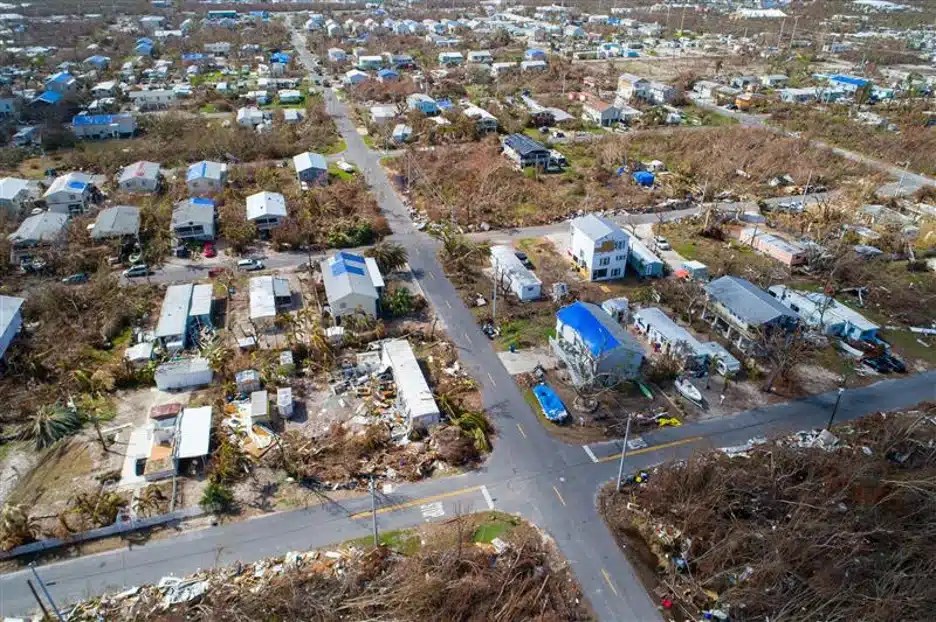Jacobs, a global leader in professional services, has secured a program management contract to support the reconstruction of the U.S. Virgin Islands in the aftermath of hurricanes Irma and Maria.
As detailed in a press release on Jacobs’ official website, the Virgin Islands Public Finance Authority has selected the firm to provide program management for the “Rebuild USVI” initiative. The $137 million contract involves Jacobs partnering with the territory’s Super Project Management Office to oversee a range of vital infrastructure projects, including hospitals, educational facilities, transportation networks, and essential utilities such as power, water, and wastewater systems.
“Rebuilding is critical for St. Croix, St. Thomas, and St. John,” said Jacobs Executive Vice President Ron Williams. “The islands are home to nearly 90,000 people who depend on safe schools, reliable transportation, consistent utility services and access to healthcare. Further, with tourism as the economic engine, it’s essential we prioritize efforts quickly and make the islands’ infrastructure more resilient for the future.”

The Florida Keys (shown), U.S. Virgin Islands, and more areas in and around the Caribbean experienced significant damage from hurricanes Irma and Maria in 2017. Rebuilding efforts are still ongoing, with Jacobs recently announcing they’d been awarded a program management contract to help oversee the rebuilding efforts in the U.S. Virgin Islands.
Over the course of this three-year agreement, Jacobs will also offer advisory and consulting services. These will address future project planning, environmental stewardship, logistics, supply chain management, and workforce-related challenges.
The Office of Disaster Recovery (ODR), which operates under the Virgin Islands Public Finance Authority, oversees the management of $23 billion in federal disaster relief funding allocated after the catastrophic 2017 hurricanes.
While notable progress has been achieved since the storms, significant recovery efforts remain. ODR Director Adrienne Williams-Octalien reiterated the agency’s commitment to the Super Project Management initiative, emphasizing that Jacobs was selected for the “Rebuild USVI” program based on its compelling proposal, demonstrated capabilities, cost-effectiveness, resource availability, innovative strategies, and strong partnerships.
Jacobs brings a wealth of relevant experience, having contributed to projects such as the Port of San Francisco Waterfront Resilience Program – designed to protect 7.5 miles of shoreline from seismic activity, coastal storms, and rising sea levels. The firm has also played a key role in restoring power infrastructure in the Philippines after severe earthquakes, reestablishing critical services in Puerto Rico following Hurricane Maria, and providing ongoing, on-the-ground support for FEMA disaster response operations across the U.S. and its territories.
“We are excited to have Jacobs’ support as we continue working to rebuild a stronger, more resilient community while ensuring full compliance with our funding requirements,” Williams-Octalien said.
The Importance of Fortifying Our Infrastructure for Extreme Weather – and How SiteMap® Can Help
The evolving climate has reshaped the global risk landscape for infrastructure. Shifting weather patterns – such as rising temperatures, heavier rainfall in some regions, and extended droughts in others – pose complex challenges that many existing systems were never built to endure. These shifts have led to an increase in both the frequency and intensity of extreme weather events, from urban flooding to the devastating impact of hurricanes along coastlines.
To safeguard buildings and infrastructure from flood damage, strategies like elevating foundations, incorporating water-resistant materials, and installing sump pumps and other flood control systems are essential. In wildfire-prone areas, using non-combustible materials can help minimize fire risks, while hurricane-prone regions benefit from wind-resistant roofing and impact-resistant windows that can withstand strong winds and airborne debris.
Strengthening utility infrastructure – known as grid or utility hardening – helps protect critical systems from severe weather and other disruptions. One common approach is undergrounding power lines, which reduces the likelihood of outages caused by wind, lightning, and other hazards.
Whenever new infrastructure is installed underground, it’s crucial to identify and account for any existing buried utilities or infrastructure to avoid costly and dangerous conflicts.
GPRS is the nation’s largest company offering above and below-ground existing conditions documentation. We Intelligently Visualize The Built World® to keep your projects on time, on budget, and safe.
GPRS employs advanced technologies like ground penetrating radar (GPR) and electromagnetic (EM) locating to locate utilities underground, as well as post tension cable, rebar, and conduits and more within concrete slabs.
We geolocate and digitize these findings and deliver them to you through SiteMap® (patent pending), our project & facility management application that provides accurate existing conditions documentation to protect your assets and people.
Available 24/7 from any computer, tablet, or smartphone, SiteMap® is a single source of truth for the critical data that allows you to protect your infrastructure from damage, whether you’re hardening a power grid or just conducting regular maintenance.
Click below to schedule a live, personal, and free SiteMap demo today!
